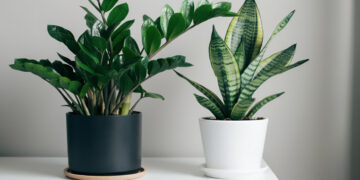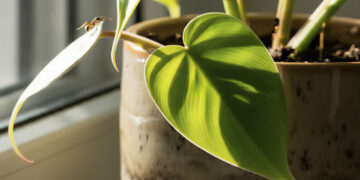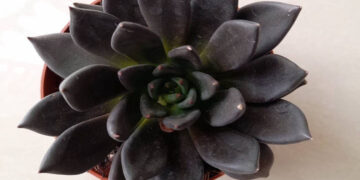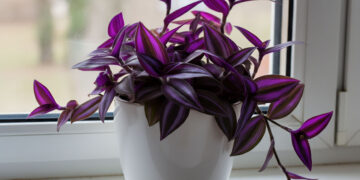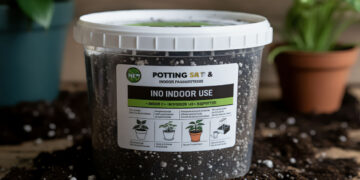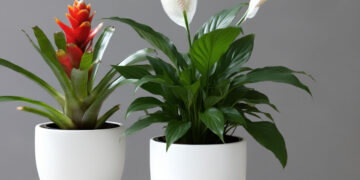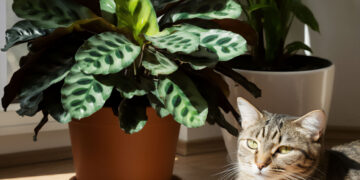First of all, you should know that the ZZ plant can grow outside the house, but you need to provide the right conditions for it.
Comparison of indoor and outdoor ZZ plants

On the one hand, a ZZ plant outside breathes fresh air, and a lot of Light and humidity reach it. In addition to improving the ZZ plant’s respiratory processes, the Houseplant grows better.
Tip: Moving the ZZ plant outside can even help treat a houseplant with very long stems and a few small leaves that become leggy.
On the other hand, direct sunlight, strong winds, heavy rain, and sudden temperature changes can shock it and cause leaf fall or stop growth. Moreover, houseplant Pests and diseases are more likely to attack it.
What are the ZZ plant’s Ideal Growing Conditions outside?
Hardiness Zones
This plant can be found naturally in the dry grasslands and forests of East Africa.
The region suitable for the growth of the ZZ plant is between USDA zones 9 and 10. For example, if you live in the deep South of America, you can grow your ZZ plant outdoors all year round. Otherwise, you should bring it indoors whenever the temperature drops below 50°F or 10°C.
Correct time
Suppose you are considering transferring the ZZ plant in late spring or early summer; it is the right time because it allows the ZZ plant to adapt slowly to the new conditions.
proper Light
Like all plants, you should prepare the ZZ plant Light requirement to photosynthesize. It can tolerate low Light, but I think you’ll see the best results if you place it in areas with moderate to bright indirect sunlight.
The ZZ plant is sensitive to direct sunlight. If you place it where the sunlight shines directly on it, the leaves will first turn a lighter shade of green and then yellow. The ZZ plant gets sunburned in more severe cases, and you see small burn spots on the leaves.
Suitable Soil
Use ZZ plant soil with proper drainage. I always recommend a mixture of potting soil, perlite, and coarse sand to keep the soil moist.
Air Circulation
One of the things that protects the ZZ plant from fungal problems is good air circulation. If you also want to take your plant outside, you must make sure that the Houseplant’s health is not endangered.
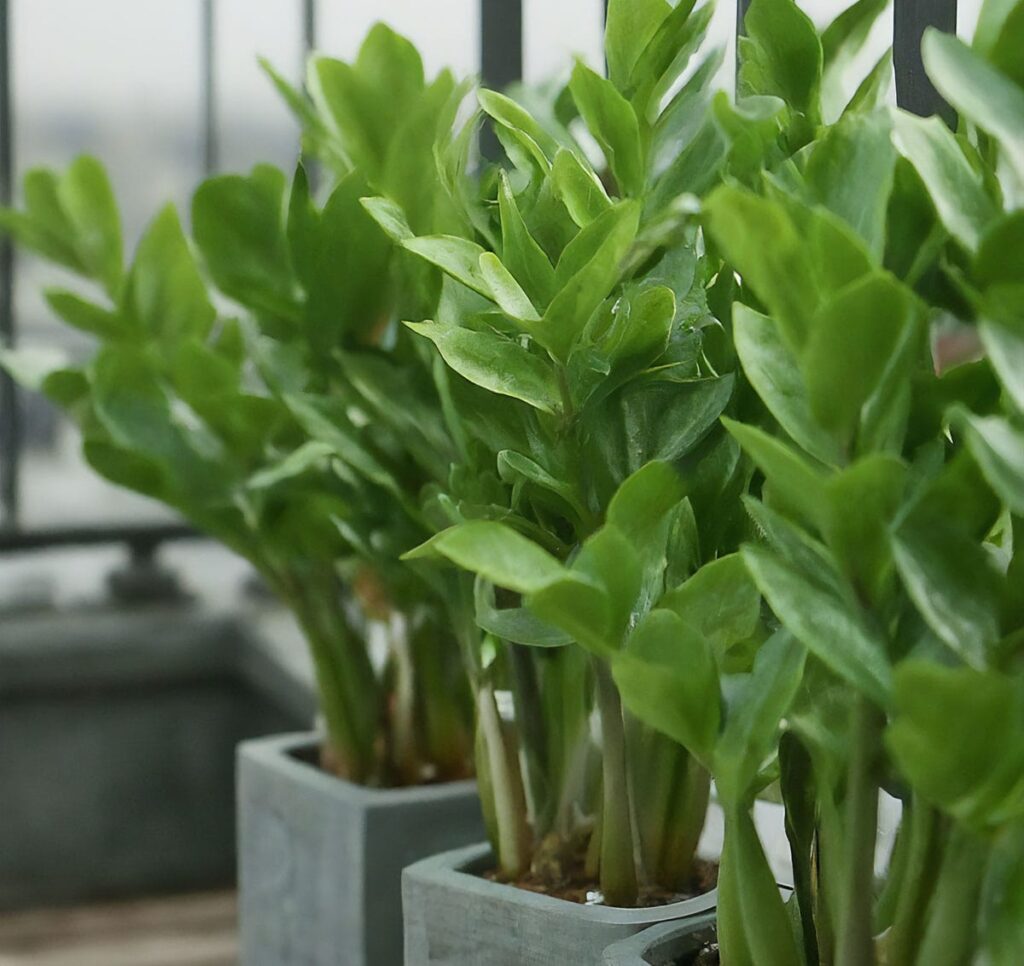
How do you prepare a ZZ plant for outside?
A few days before moving, I watered the ZZ plant well and confirmed it was not waterlogged. Then, I controlled the health of the ZZ plant. Treat your Houseplant before anything else if you see signs of stress, pests, or diseases.
Adaptation to new conditions
As we know, sudden changes will damage every Houseplant. It’s better to be patient.
Before you entirely put the ZZ plant outside, you should give it time to adapt to the new conditions.
I used to leave it on the terrace for a few hours in the morning when the temperature was warm enough, and then I gradually increased these hours.
I did the same way for adaptation to Light. First, I put the ZZ plant under a big, shady tree for a few hours. You can also put it on the patio. With proper planning in two weeks, I positioned the ZZ plant in the shade for one more hour daily. When the ZZ plant was well adapted to the shade, I introduced it to filtered sunlight.
Is everything going well and compatible with the outside?
Please pay attention to its appearance to understand that your ZZ plant is in harmony with the outside environment.
My plant’s leaves were healthy, challenging, and green, and I noticed that it was growing. So luckily there was no problem.
But if your ZZ plant is sunburned, its leaves are limp and withered, the color of the leaves has turned yellow or brown, or you see that its leaves are falling and the ZZ plant is not growing, it is under stress. Sometimes, pests like aphids, spider mites, or scale insects may attack the plant and make your ZZ plant sick.
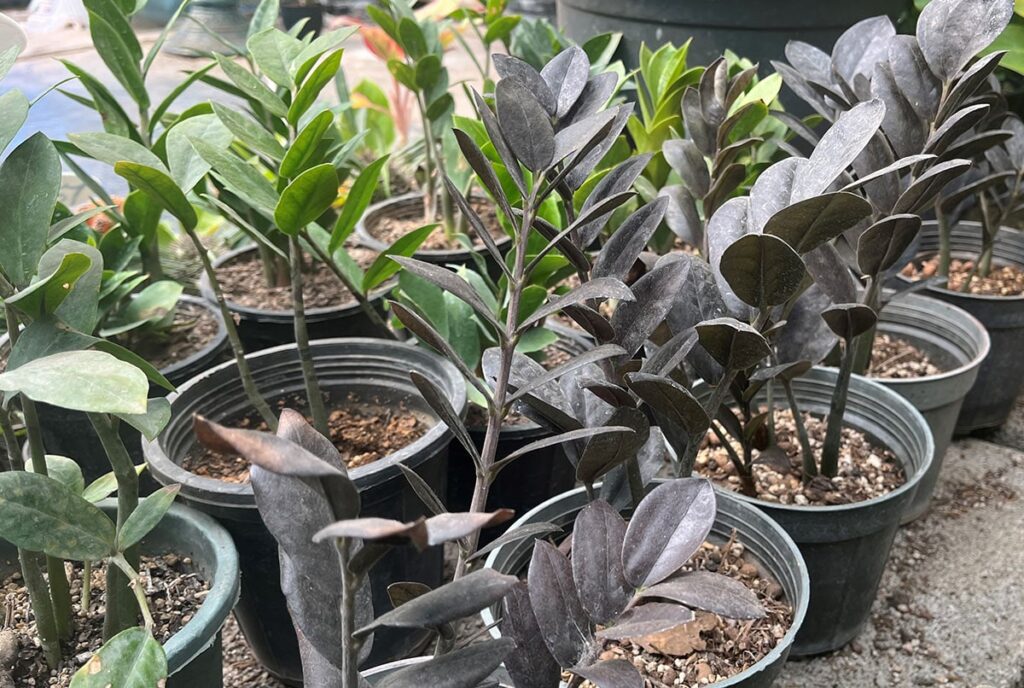
What should we do after the plant adapts to the outside?
Naturally, the care of the outdoor ZZ plant is different from the ZZ plant care that lived in the living room, so you should pay attention to the following points.
Watering Routine
With the increase in evaporation and wind, you should boost how often you water the ZZ plant. Check the soil level and water it whenever it is dry. (Watering about once a week is enough.)
If you want to know more precisely, tell me your weather conditions in the comments, and I’ll try to give you a small care plan.
Protect from Pests
Pest attacks are always lurking. Watch out for the ZZ plant regularly. Use insecticidal soap or neem oil if aphids, spider mites, and scale insects are attacked.
Not all insects are harmful. I encourage ladybugs to help control pest populations naturally.
Extreme Weather
The weather forecast helped me significantly in caring for the outdoor ZZ plant. It warns me of heavy rainstorms, heatwaves, or frost to protect it by bringing it home.
Having a patio is very useful when it is windy and rainy.
When you feel too light, you can use a shaded cloth or move it to a shaded area.
If the weather gets cold, bring it indoors as soon as possible.

